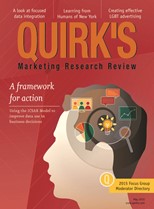Editor’s note: David Trice is co-founder and CEO of customer relationship management firm Engage.CX, Atlanta.
Leaders in the C-suite know that understanding how customers feel about a business is critical to maximizing financial performance. To that end, executives from just about every industry have implemented popular metrics like Net Promoter Score (NPS), customer effort score (CES) and customer satisfaction score (CSAT) to gain insight into the customer experience. Despite these efforts, most C-suites haven’t seen a correlation between the data from these metrics and financial lift.
The reason is simple: When measuring customer experience, timing and customer sentiment are everything. If data isn’t gathered at every customer touchpoint, the metrics for customer experience won’t be a good predictor of financial performance. Traditional metrics have a variety of shortcomings:
- Net Promoter Score: NPS divides a company’s customers into three categories – Promoters, Passives and Detractors – and asks one simple question: How likely is it that the customer would recommend the company to a friend or colleague? Timing is everything with this metric. Is the business surveying the customer after he or she takes advantage of a generous company policy or after an extremely unfortunate mishap? The NPS does not tell management teams what's working and what needs change. According to D. Randall Brandt, vice president at Maritz Research, while NPS may have some predictive capacity for broad customer populations, it says little about what motivates individual purchasing choices. Additionally, knowing the overall NPS doesn't give any information about the makeup of the Promoter and Detractor populations. Because of this, the NPS has little to offer management teams in the way of actionable next steps.
- Customer effort score: CES is derived from a question that businesses add to their post-transactional surveys to determine the degree of effort that the customer had to exert in order to get an issue resolved, a question answered, a request fulfilled or a product purchased or returned. Very few customers want to answer in this situation, leaving executives with data from very few – possibly even skewed – respondents. CES is useful when a customer has had a difficult time getting a request fulfilled. However, if the customer’s request wasn’t satisfied, this is generally not the time to ask a customer how much effort was required. First, the customer is frustrated, as the request remains unfulfilled. Second, the customer may be left with a negative impression of the company, assuming it wants customer help to improve but is unwilling to help resolve the customer’s issue. If a business is not able to capture a significant number of scores in this situation, results are likely skewed to the positive.
- Customer satisfaction score: Customer satisfaction surveys have become very common when companies are looking to capture the voice of the customer. It’s customary to see surveys at the bottom of retail receipts, in your e-mail inbox or at the end of an online chat session – often infringing on the customer’s time and goodwill. Many businesses are desperate for input from customers and willing to do just about anything to get it. Unfortunately, business use of this method is high and consumer participation has always been extremely low, requiring businesses to provide larger and more frequent offers and discounts to capture the attention of willing participants. This approach is fraught with challenges such as skewed statistical samples driven by large groups of mildly satisfied or mildly dissatisfied customers. CSAT also fails to differentiate specific factors that contribute to customer satisfaction, such as good value (the quality and quantity of the service for the price), how closely the customer's expectations where met and how valued the customer felt at the end of a transaction. This lack of detail inherently skews CSAT results, leading to scores that should be considered unusable.
Survey results may create a false sense of security about customer experience levels, leaving executives without a good read on customer loyalty and an uncertainty on what is driving advocacy for their brands and customer relationships. Rather than relying on outdated metrics, companies should work to measure the customer’s sentiment throughout his or her entire relationship with the business. This can be achieved by employing three survey tactics:
- Emphasize brevity: Keep surveys short and sweet. Most companies make surveys too long and it’s important to tailor the length and essence of the survey to preserve a customer’s goodwill. This means the survey might be only one or two questions long. By making surveys easy and quick, conversion rates on capturing information will go up.
- Expand the reach: Capture data across multiple touchpoints. Now that the survey has been slimmed down, it needs to be deployed in more relevant places and across a broader representation of the customer lifecycle. Collecting input across a wider array of touchpoints provides a more holistic view of the customer – and better insight to how customers feel about the company throughout their journey.
- Increase frequency: Attempt to collect mini-surveys more frequently to better understand what customers are thinking. Think about surveys in the context of tracking a trend over time rather than finding and using the results of one survey.
By implementing this process, businesses will begin to answer some key questions:
- Why were customers acquired for a specific period, in both volume and value?
- Why were customers lost during the same period?
- How did we do as a whole at serving this asset across the entire operation and throughout the entire customer lifecycle?
The answers to these questions provide clarity on the customer relationships that can drive financial performance. That’s the firepower created by viewing customers as assets – it begins the process of connecting customer experience to ROI.
